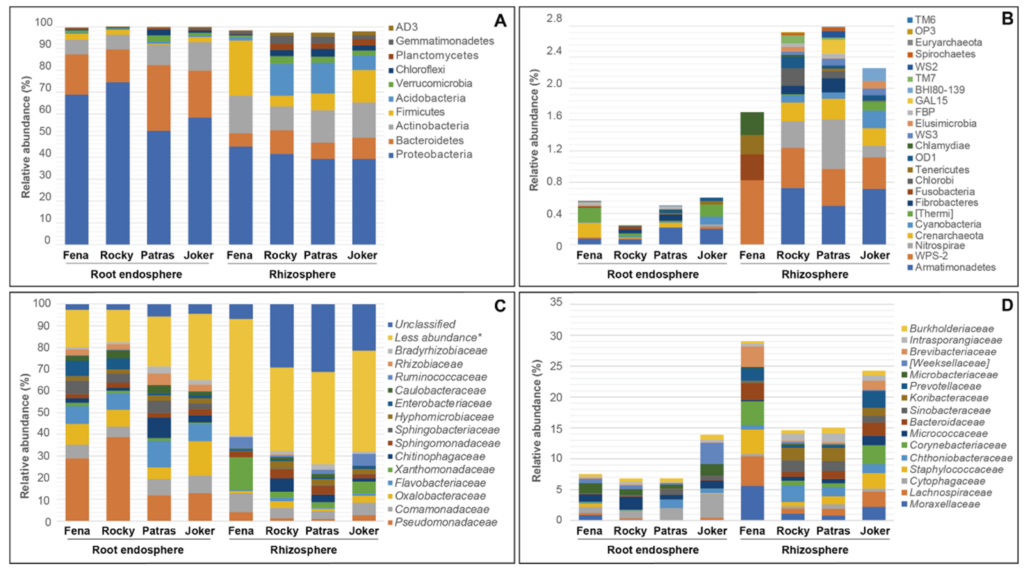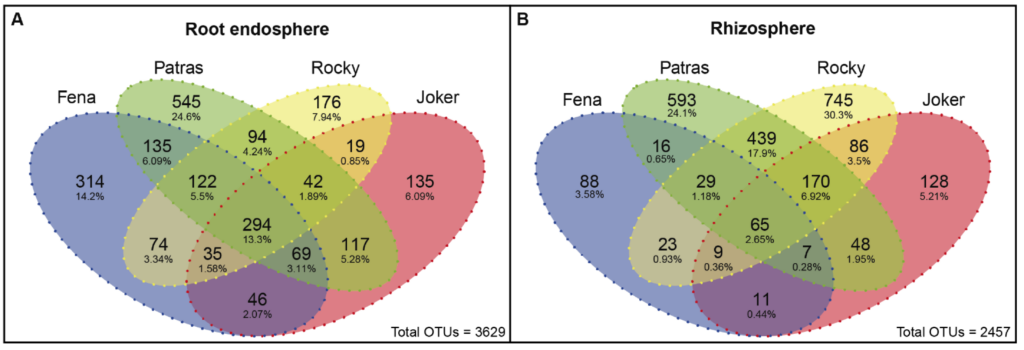Publication alert – Diversity, community structure, and potential functions of root-associated bacterial communities of different wheat (Triticum aestivum) cultivars under field conditions
https://doi.org/10.3390/agronomy13051392
Wheat is one of the most consumed crops worldwide, and there is significant pressure for it to meet the increasing global food demand. To achieve this, increased wheat productivity through the efficient application of fertilizers, water, and pesticides is the major challenge in the current agricultural scenario. However, the wheat microbiome has the potential to improve the health, resilience and productivity of this crop. Nutrient acquisition, protection against soil-borne diseases, and stress tolerance have shown to be modified by microbiomes in the roots (endosphere) and the soil surrounding the roots (rhizosphere) of wheat plants. Better knowledge of this presents an opportunity to improve the health and productivity of the wheat crop.
Understanding the changes in microbial community structure and function (what species are present and what they are doing) between different cultivars of wheat and how they are impacted by local factors, such as soil parameters, is essential. Therefore, this study explored the variation in the diversity, community structure, and potential functions of rhizosphere and root endosphere bacterial communities of three local and an imported reference wheat cultivars under field conditions.
The results from this study represent a stepping-stone toward development of wheat cultivars that can recruit a specific beneficial root microbiome contributing towards a productive and resilient wheat crop.

Relative abundance plots of microbial communities of different wheat cultivars. https://doi.org/10.3390/agronomy13051392

Venn diagram comparing microbial communities of different wheat cultivars. https://doi.org/10.3390/agronomy13051392
Read the full article: https://doi.org/10.3390/agronomy13051392
Manuscript authors – Gupta Vadakattu
See more research on how harnessing microbes are benefiting agricultural plant health here:
